If You’ve Never Cooked Bangladeshi Food, Now’s Your Moment
Let cookbook author Dina Begum be your guide to everything from spicy bhortas and glistening kebabs to divine biryanis and milky puddings.
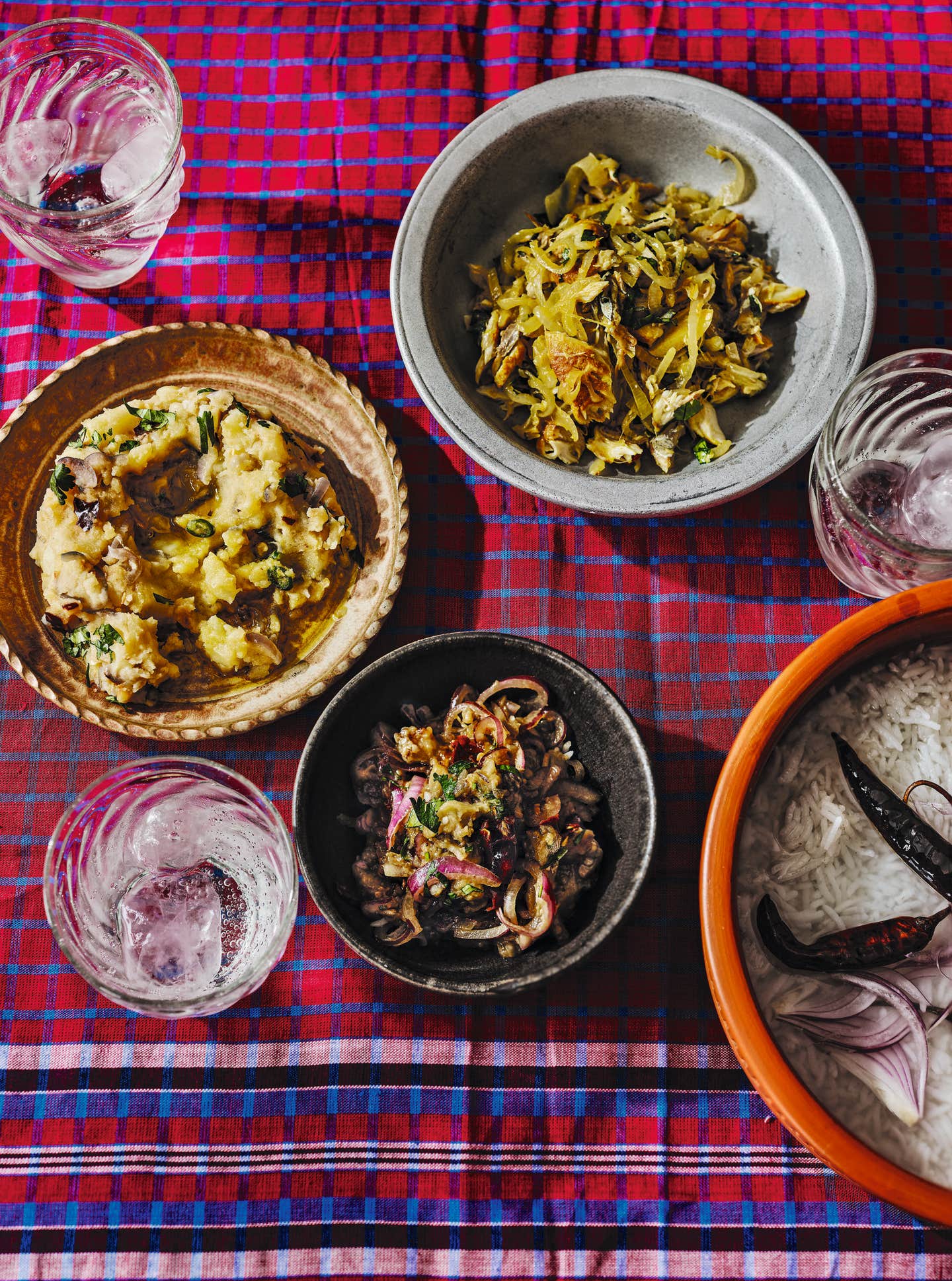
This interview is brought to you by the SAVEUR Cookbook Club, our passionate community of food-loving readers from around the globe celebrating our favorite authors and recipes. Join us as we cook through a new book every month, and share your food pics and vids on social media with the hashtags #SAVEURCookbookClub and #EatTheWorld.
You’ve probably had Bangladeshi food before…but you might not have known it. As author Dina Begum explains, much of the cuisine of Bangladesh “has become lost under the umbrella of ‘Indian food,’” and few staples of Bangladeshi cooking have been documented outside of Bengali-language cookbooks. It would also be easy to conflate Bangladeshi and Indian cuisine, especially in diasporic Southeast Asian communities. Bangladeshi immigrants were the majority owners and operators of the curry houses in the United Kingdom during their heyday from the 1960s to 1990s.
Yet as Begum notes in her new and thoroughly captivating cookbook, Made in Bangladesh, though the country only gained its independence in 1971, the ancient cuisine and cultural traditions of the country deserve their own spotlight. Traces of the Mughal Empire and the many Persian, Turkish, and Arabic-influenced dishes flow through the recipes in Begum’s book, alongside a present-day emphasis on the specialities of preparing rice, fish, and vegetables that distinguish each of the country’s eight primary regions (divisions) and its 13 annual festivals. Begum’s book is divided into menus across the six growing seasons of the year, and demonstrates how Bangladesh has its own “natural order … a quiet thread that pulls everyone together in a giant embrace—with food at its center.”
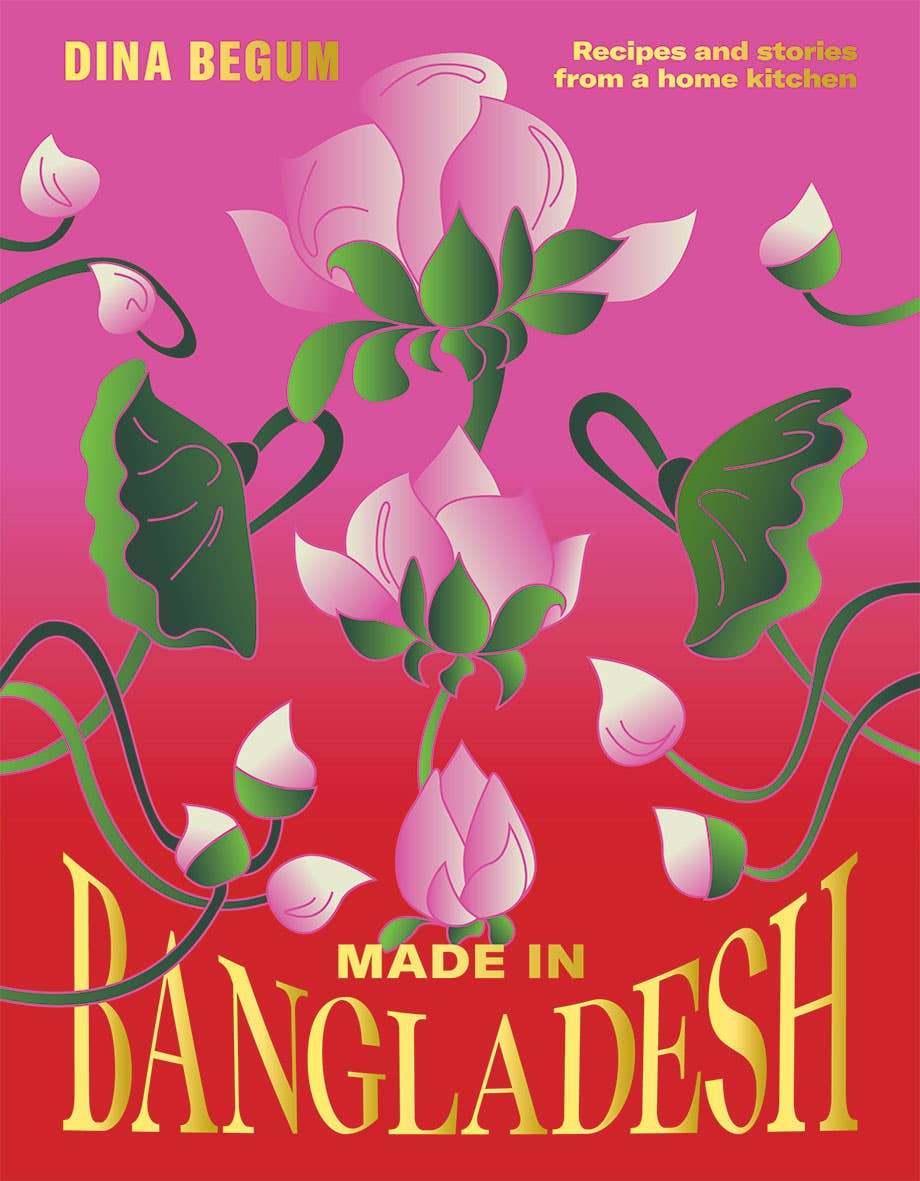
Begum was born in the Sylhet division of Bangladesh, emigrating to England at four years old, along with her mother and brother. There, they reunited with her father in the Brick Lane region of London, widely considered the heart of the UK’s Bangladeshi community. Her grandmother’s table in Birmingham hosted many dawats (feasts) throughout her childhood, marked by the smells and flavors of sweet date molasses, pungent fermented fish, flaky coconut, and smoky mustard oil. But it was the tiny gestures of love made through food—snacks of doodh kola (rice with milk and banana) or coconut fudge and the tangible pleasure derived from hours of shaping pitha (rice-based dumplings, sweets, and savory dishes) side-by-side with family members—that laid the groundwork for Begum’s lifelong passion for storytelling through food.
Speaking with Begum from her home in London, I learned that her book was crafted not only as an act of historic and culinary preservation, but as a document of intensely personal and loving culinary memories, what she calls a “love letter to the country of my birth.” Whether she focuses her evocative prose on describing bites of crunchy bora (fritters), detailing the many ways to prepare rice, or the countless sweets that brought her family to the table, each of the dishes in Begum’s book shows her love and understanding of Bangladeshi culture, and offers a warm and delicious “shagotom” (welcome) to all home cooks.
How did you get your start as a food writer?
So food was always a big part of my life, though it was not part of my day job; I started writing fiction and poetry long before I wrote about food in any formal way. But about 10 years ago, I started a blog that eventually became my first book, The Brick Lane Cookbook, all about the neighborhood I grew up in in London. Brick Lane is a neighborhood of many people and cuisines, and the book is representative of that mixture. But I didn’t anticipate the overwhelming response the book would receive, especially about the Bangladeshi recipes. So many people messaged me asking for more, and that encouraged me to delve deeper into Bangladeshi cuisine. I was inspired by the books that were coming out that explored regional global cuisines, in particular Samarkand by Caroline Eden. I didn’t know anything about Central Asian cuisine, and it was such a revelation to me. And I thought, “Somebody else might come to see Bangladeshi food in this way, because they don't know anything about that.” I wanted my book to be a revelation, for people who could find joy in learning about not just Bangladeshi food and recipes, but also its culture and the country as a whole.
You moved to London with your parents as a child, to join your grandparents who had emigrated earlier. How did they navigate the cooking process in their new country?
During my childhood, we lived in an apartment similar to that of our Bangladeshi neighbors, a flat with a very small balcony. So people would grow food on practically every balcony in the neighborhood, and all the aunties would share what they grew—mainly chiles and tomatoes, easy-to-grow small items. When I was growing up, my dad would take us to Brick Lane Market, and there were a few grocery shops that would get produce from Bangladesh, so we’d go when we knew deliveries were being made. But people also used a lot of dried ingredients, and whenever a relative would go home, they’d bring back dried versions of practically everything. My grandmother in particular wanted to make everything from scratch, so when she’d go home, she’d make cured beef, she’d get rice from her village, put it in her bag, and bring it all back to her pantry.
Some of our neighbors who had gardens grew more traditional British produce to balance things out. For example, my grandmother grew rhubarb instead of the jujube berries commonly used in fish stews. When people first migrated to London in the 1970s–80s, many people lived in flats, so they didn’t have gardens available, but with the second, third, and beyond generations, people were more financially stable, and they could move into homes with gardens, or access community gardens–and that’s when they began planting seedlings from Bangladesh. So it’s taken many years to see a surge of interest and expertise in more traditional produce and dishes.
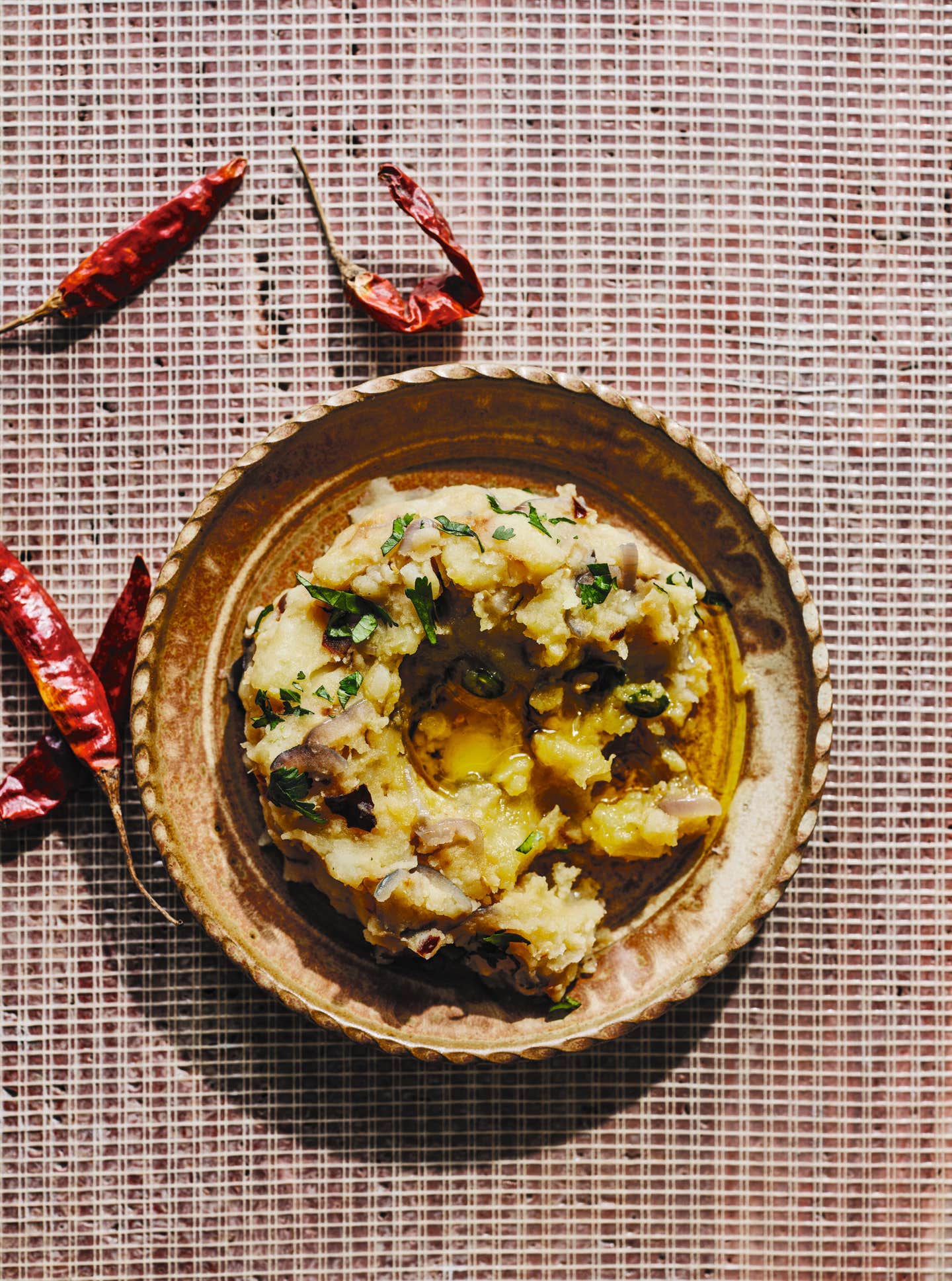
What do you want people to think about when they encounter Bangladeshi cuisine for the first time?
I hope they start without a comparison to Indian food—because it’s totally different from Indian food, and though there may be many overlaps, readers should approach Bangladeshi cuisine with an open mind, seeing it as fresh and new and hugely varied from place to place. For example, shatkora, the bittersweet citrus, is specific to Sylhet. Further south, you find more Southeast Asian flavors, with more tamarind, dried and fermented fish and so on, but also more spices. Each region has specialty cooking techniques as well: some feature a lot of steaming in banana leaves, or cooking over wood fire (particularly in more rural areas). That technique adds a lot of flavor, but also changes the method of preparation–when you can’t easily control heat, dishes have to be made all at once rather than in stages. Similarly, the intensity of seasoning changes–you’ll find richer, more indulgent dishes in Dhaka, and then you go to a rural area and find food cooked with very little oil.
People need to understand that this is a distinct cuisine—because even though Bangladesh is a small and relatively new country, the cuisine is ancient, and it has been vastly overlooked. It’s important for me to pay respect to my culture and to my ancestors—not just the women in the kitchen, who put so much effort into everything, but also men like my uncle, who worked in the restaurant industry in England. Some people called what he was making inauthentic, but restaurateurs like him were focused on setting themselves and their families up in a new country. They weren’t so preoccupied with calling what they were making “Bangladeshi food.” But now things are changing, and it’s important to recognize that Bangladeshi cuisine has always been there, alongside Indian and Pakistani cuisines, and it should be celebrated.
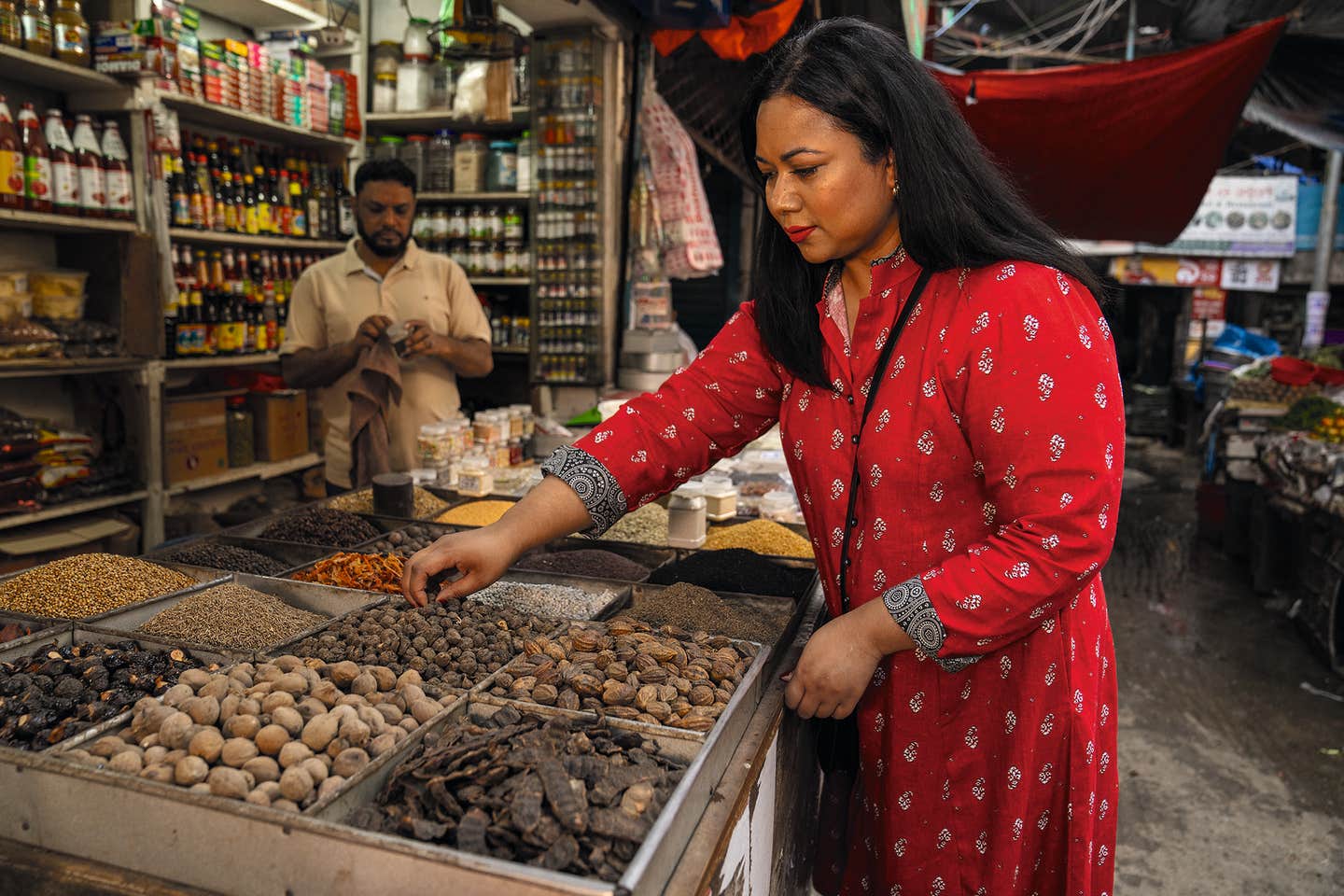
Many diasporic Bangladeshis come back to the country during the winter, when they can take part in certain festivals. What was your experience upon your return, and how did you explore those festivals?
When I revisited the country as a teenager, it was a huge moment for me, in part because I realized that what I was eating there was the food of my heritage. Then I went back again as recently as last year, to do my book research, and I realized how much a person would miss if they only went by media coverage of the country. You have to be there to see the vitality of the old culture—and the new developments as well. In some areas of Dhaka, the capital, you could be in any major city in the world, with plenty of coffee shops, bakeries, restaurants, etc. And then you'd go to old Dhaka, the historic district, and you'd be deep in culture and history, in streets with such small bylanes that cars couldn’t fit through; you’d have to go by foot or rickshaw.
And of course the food festivities were just incredible. November to February are the key months where people usually visit for weddings, family gatherings, etc., and of course for the harvest festivals. The rice harvest is a huge event, and the community feeling emerges during that time as well—because whole villages, not just families in villages, gather together. It felt like such a nice way to celebrate the winter, to have all the street food vendors selling pitha, and people mingling late at night with their families, sampling food from everywhere, with lights and decorations on all the buildings.
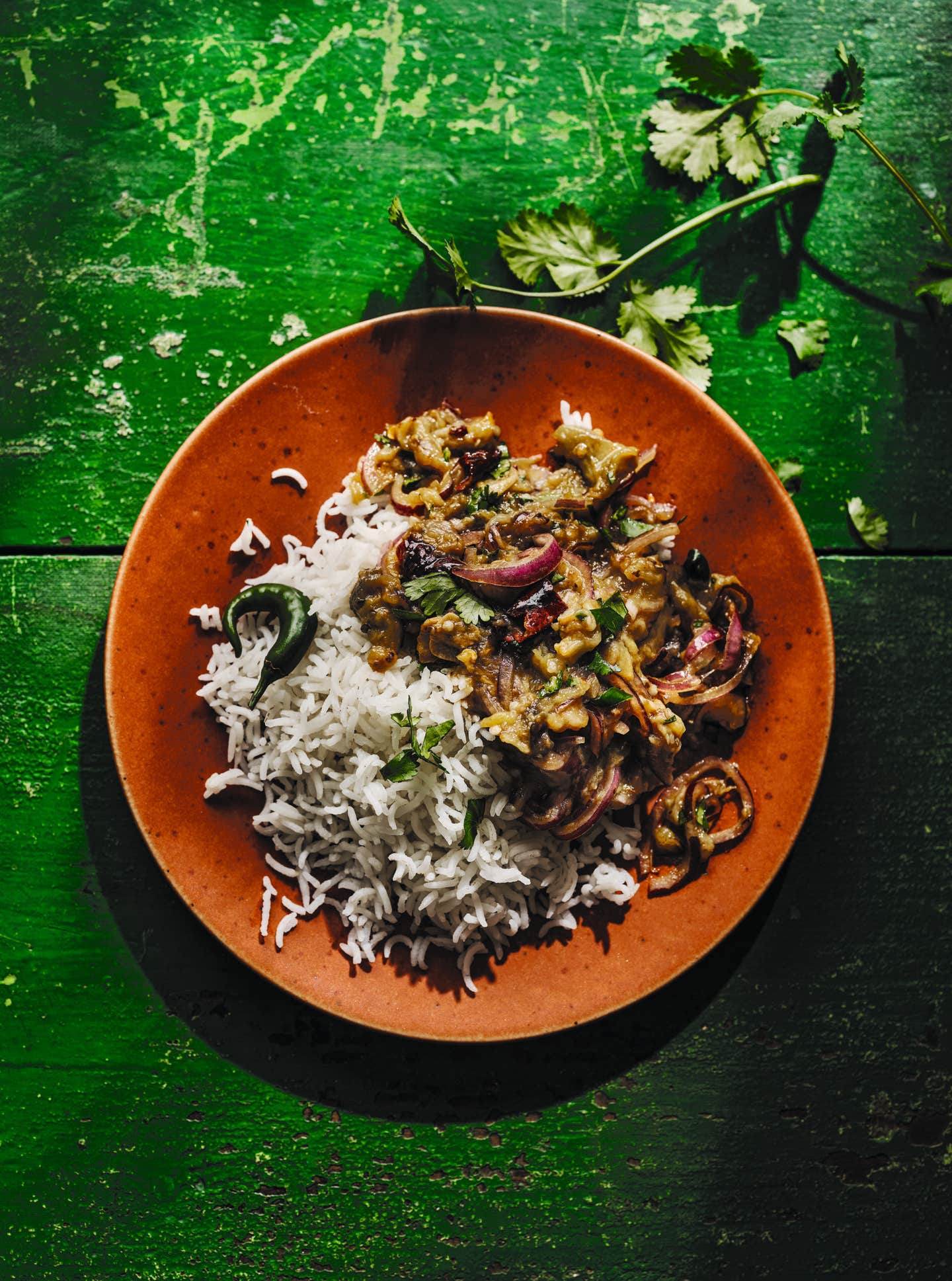
Rice is the staple food of Bangladesh, and no meal is complete without some kind of rice on the table. What kinds of rice preparations do you highlight in this book?
In Bangladesh, rice is much more important than flour, because there are so many different forms it can take. Very small-grained, aromatic rice known as cheenigura or kalijeera are very popular, and we tend to use that over basmati. You have white rice and red rice (very popular in Sylhet, the region where I’m from). You have rice flour which you use to make everyday fritters, like boras and pakoras and things like that. Then you have ground rice used in pitha, which can be sweet or savory, and take the form of fried or steamed rice cakes, or made into pancakes or crepes. Bangladeshi also enjoy rice puddings, khichuri, and sweets, and molida, a drink that uses coconut cream, coconut water, and flaked rice. If you just had even a few rice varieties in your cupboard, you could make so many dishes out of it.
Similarly, fish is a huge part of the Bangladeshi culinary culture, for Bengalis on both sides of the border.
In Bangladesh fish is an everyday occurrence, not reserved for special occasions. (If anyone were to ask me for the four key elements of Bangladeshi cuisine, I would say “fish, rice, pitha, and bhorta.”) Whether fresh or fermented, fish is one of the things that distinguishes Bangladeshi from Indian or Pakistani cuisine, which tend to be more meat-focused. People source their fish from what’s available–the nearest sea, the lakes in our village, any of the 700 rivers. There are also many kinds of cultural references with fish, and they appear as decorations and motifs in weddings and at festivals, where there are lots of little fish-shaped sweets. (My mom would even make fish-shaped pitha!) My father, who passed away while I was writing this book, had a meticulous knowledge of fish, and he was wonderful at conveying that knowledge to me in English so I could understand. He knew all about the different varieties of fish one could use, and the different cuts to use for different stews or curries.
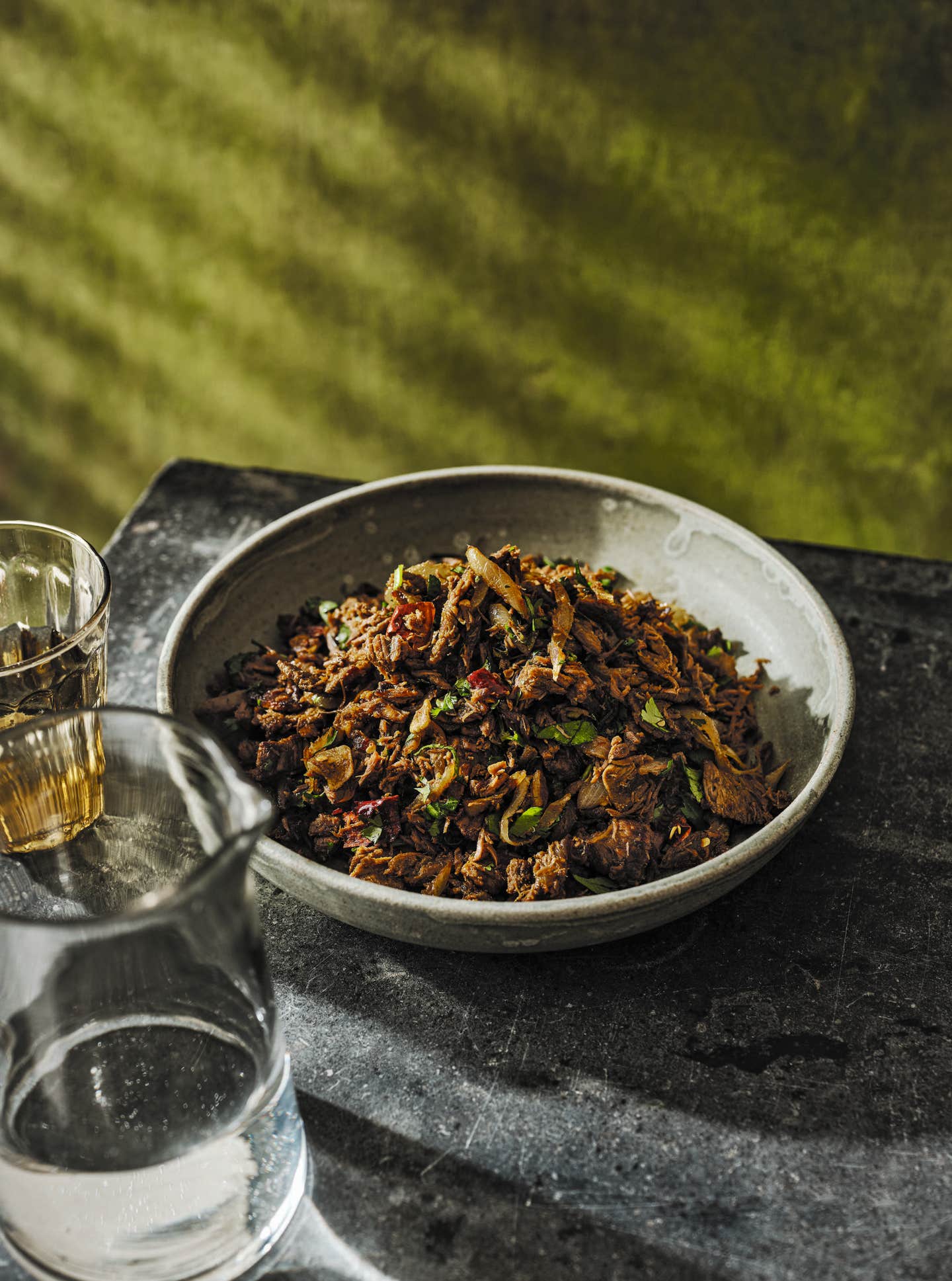
You call bhorta the “soul food of Bangladeshi cuisine,” but it’s also a very versatile, very comforting dish to prepare. Take us through the process of preparing bhorta.
Bhorta is what Bangladeshis go to when they miss home; it cheers them up instantly when they see it. And they are so restorative for me. Even now, every time I’m ill, my mother makes aloo (potato) bhorta and serves it to me with rice. (When you're sick, you either want soups or carbs, and this is satisfying in that double-carb way.) You can make it as spicy as you want, and you can make it with almost anything—usually vegetables, but also pulses, fish, meat, even spices like nigella seeds. Because bhorta is really defined by its seasonings, not the ingredients you use to fill it out.
The foundation of any bhorta is chiles—small dried red chiles, fresh green chiles (usually Thai or finger chiles), or a combination of both—which are fried in mustard oil for a smoky, pungent, but very aromatic base. These are usually combined with garlic, onions (raw, fried, or sauteed), and chopped cilantro. You boil or roast your secondary element—potatoes or eggplant or shredded beef or whatever else—and then use your hands to mash it with the seasonings. (This is why I suggest gloves, to protect from the chiles). It’s very tactile and very effective, because when you use your hands, the ingredients will meld together better than if you use a food processor. It’s a beautiful part of a multi-course meal, and there are so many varieties to choose from.
Each element of the Bangladeshi meal seems to work in harmony, in particular the cha nasta (the daily combination of tea and snacks). What is it like to enjoy that?
Cha nasta is my favorite thing, though often I’m astonished by how much work it takes. It can range from something small and casual, to something that takes over your day. Good cha is a slightly sweet tea—sometimes with spices, sometimes without. It’s usually paired with something savory and fried, like shingara (pastry filled with spiced potatoes) or chop (cutlets), or with something like a rice pudding or mishti (a sweet treat). Whenever I’d go to visit neighbors, there’d always be tea accompanied by something sweet or savory. But it’s also what you eat with new acquaintances. Cha nasta is often the meal where people first meet—cha nasta is a way to test the waters, and to be hospitable and welcoming. And its flavors always remind me of celebration, especially for events like Eid and Bangladeshi New Year.
You talk about how the dinner table in your grandmother's house played host to small, family dinners, but also huge ornate dawats of up to 50 people at any given moment. What would be on the Bangladeshi table for one of these feasts?
A dawat is defined by the many, many dishes on hand; you’d have very little space for your plate, since the table would be covered with the main dishes. At my grandmother’s, she’d often have impromptu guests, and then we’d end up putting tables together, so many that they would cross over from the kitchen to the dining room, or we’d all crowd around the sofa, wherever we could fit. The table would always be full; there would be no space for flowers and decorative items, it would be literally covered with food. There would definitely be platters of curry and rice, either steamed or as a biryani or pulao. Fried fish, for sure, would have a place of honor, as would fish curries and stews. For big parties, a whole fish or a large cut of fish would be important for honoring your guests. There might also be a roast chicken, and sweets would follow, along with tea. And of course you couldn’t leave until you were full to the brim.
For Eid-al-Fitr, the traditional feast at the end of the long month of Ramadan, what are your favorite dishes to prepare?
I really like making traditional pitha for Eid. Especially in my home region of Sylhet, we would make handesh or teler pitha, which are fried rice cakes with date molasses. Bangladeshi date molasses is made from the date palm tree (unlike date syrup, which is made from dates) and has a rich smoky taste because it’s cooked down over a wood fire. We would make other kinds of pitha as well, like nuner bora (yellow fritters made with ginger and turmeric) and coconut pitha. The key thing was to have handmade pastry, because that was how we’d spend time together before the feast. The day before Eid, the whole family would gather around the table to make these items, with everyone making hundreds of samosas and pastries. As a teenager, I didn’t much enjoy being in charge of the pitha-making, and eventually delegated to my younger siblings. (I’d say, “Your turn, I’ve done my share!”) But I loved the responsibility of frying handesh—my mother would make the batter the day before, and then I’d fry them one at a time. It takes hours, but it's the most satisfying thing, to pour the batter and watch them puff up into these amazing cakes, and get into the celebratory mood as they cook.
This is one of the first major English-language Bangladeshi cookbooks on the marketplace today; what does that mean for you as a writer?
I’m inspired by the dishes in this book, the foods that require so much skill, that take years of preparation to fine-tune. The creativity and wisdom of my ancestors, my mother and grandmother, have had such a huge influence on me, and I’ve tried to distill their knowledge into this book. I’ve kept their recipes, the details of how they cooked things, exactly as they did, without dialing down any flavors or techniques. My grandmother passed away just before I got my book deal, and I think she would have loved this book. I’ve written so many memories of her into the book, and I know now that if I’m missing her, I can delve into her recipes once again.
It’s also important for me to share this as a mainstream book, because one of my key motivations is to preserve these dishes before they die out. Many younger people, or second- or third- generation Bangladeshi living abroad don’t cook often, or haven't learned how to cook these dishes. So what I've tried to do is to delve into classic old-school dishes as well as the regional and seasonal dishes that people eat every day. For me it’s become a mission to put the cuisine and country on the map, and to help people explore Bangladeshi cuisine and culture in a joyous, digestible way.
This interview has been edited and condensed for clarity.
Keep Reading
Continue to Next Story










